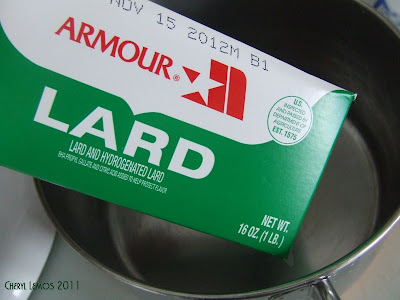 |
| That's me with a glacial erratic . . . it's HUGE |
From an aerial viewpoint, the Ossipee Mountain
The diameter of the Ossipee Mountain
______________
Pumice is rock made by erupting volcanoes which is “solidified frothy lava typically created when super-heated, highly pressurized rock is violently ejected from a volcano”. It can be formed when lava and water are mixed.
Pumice has many uses . . . from an additive for cement to abrasive for polishes. For the purposes of this blog it is also used as a dermal exfoliate. More specifically, for an additive for homemade soap to help scrub away foreign substances and dead skin.
My husband does a lot of work with his hands . . . both on the job and as my personal handy man. He made a special request for me to make him “mechanic soap” to scrub the work day away (I’m a poet and didn’t know it).
This is the recipe I came up with. I made this using the same safety precautions and procedures I used in this post.
Mechanics Bar
16 ounces lard
1 teaspoon finely ground pumice added at trace
1/8 cup coffee grounds added at trace
2.3 ounces lye
7 ounces Ice Cold or Part Frozen Distilled Water
1 teaspoon Eucalyptus oil
Remember that when you’re making your own soap that you should have a dedicated set of equipment set aside just for this process.
This recipe is for a cold process soap. The basic tools required are:
A Large Pot . . . Enamel or cast iron do very well for this.
A Large Wooden Or Plastic Spoon
A Hand Mixer (Optional)
A Large Baking Pan Or Shallow Cardboard Box
Prepare the lye water by freezing 1/2 of the water into ice cubes. Put the ice cubes and the rest of the water into the 1 to 2 quart bowl. Using the stirring spoon (known to soap makers as the "crutch"), pour lye slowly into the ice and water, stirring until the lye is all dissolved. Remember that lye is very caustic and will burn your skin and eyes! Any splatters must be washed off immediately with lots of water!
Cover the solution to keep out air and allow to cool (or warm up) to about 85 degrees F. No need to apply heat – heat will be chemically produced when the lye comes in contact with the water.
Melt the fat in the 4-6 quart bowl or pot. Don't use aluminum or galvanized bowls!
When the fat is melted, cool it down to 95 degrees F. Prepare the box with a plastic trash bag lining, so the fresh liquid soap can't leak out.
When all is ready, begin to stir the liquid fat in a clockwise direction while pouring the lye water into it in a thin steam (pencil size or thinner) until it is all added. Crutch (stir) the mix vigorously, using “S” pattern or use a hand blender alternating with a circular pattern until the mix begins to cool and thicken. At this point do NOT stop or the mix may separate!
First the soap will be murky, then creamy, then like heavy cream and finally, like hot cooked pudding and will show traces when you dribble a stream from the crutch onto the surface. This process can take from 10 minutes to 45 minutes, depending on the temperature, weather and purity of your ingredients. Stir vigorously but patiently! With hand blender stir time is cut to 1/10 of the regular time.
Add the essential oil, coffee grounds and pumice at trace. Trace is when the mixture doesn't sink back into itself. Kind of like the look of whipped cream or meringue.
When your "trace" does not sink back into the surface, the soap is ready to pour into the lined box. Wear rubber gloves and treat the raw soap like you treated the lye water. Wash off all splatters immediately. Have 10% vinegar and water and a sponge to neutralize splatters.
After 3-5 hours the soap may be cut into bars with a table knife, NOT a sharp knife. Allow the soap to cure in the box for about a week before breaking it up and handling it, and another month before using it.
If you are interested in some perfectly wonderful hand crafted soap but don't want to go through the process of making it . . . Soaps by Judy is a fantastic source. She's a personal friend of mine and a great lady and she makes the most amazing soaps! Check out her website and look her up on Facebook.
(1)Ring dikes are thick, nearly vertical igneous bodies that form concentric circles around a central intrusion. They are usually caused by the repeated subsidence of the cauldron. A ring dike can also be thought of as a long mass of igneous rock that cuts across the structure of adjacent rock.
(2) A Caldera is a cauldron-like volcanic feature usually formed by the collapse of land following a volcanic eruption. It is caused by the emptying of a magma chamber.












I know where I can buy lard and Eucalyptus oil. Where would I find Lye and pumice? I wanna make this! And, do you find this less expensive than buying Lava mechanics soap?
ReplyDelete